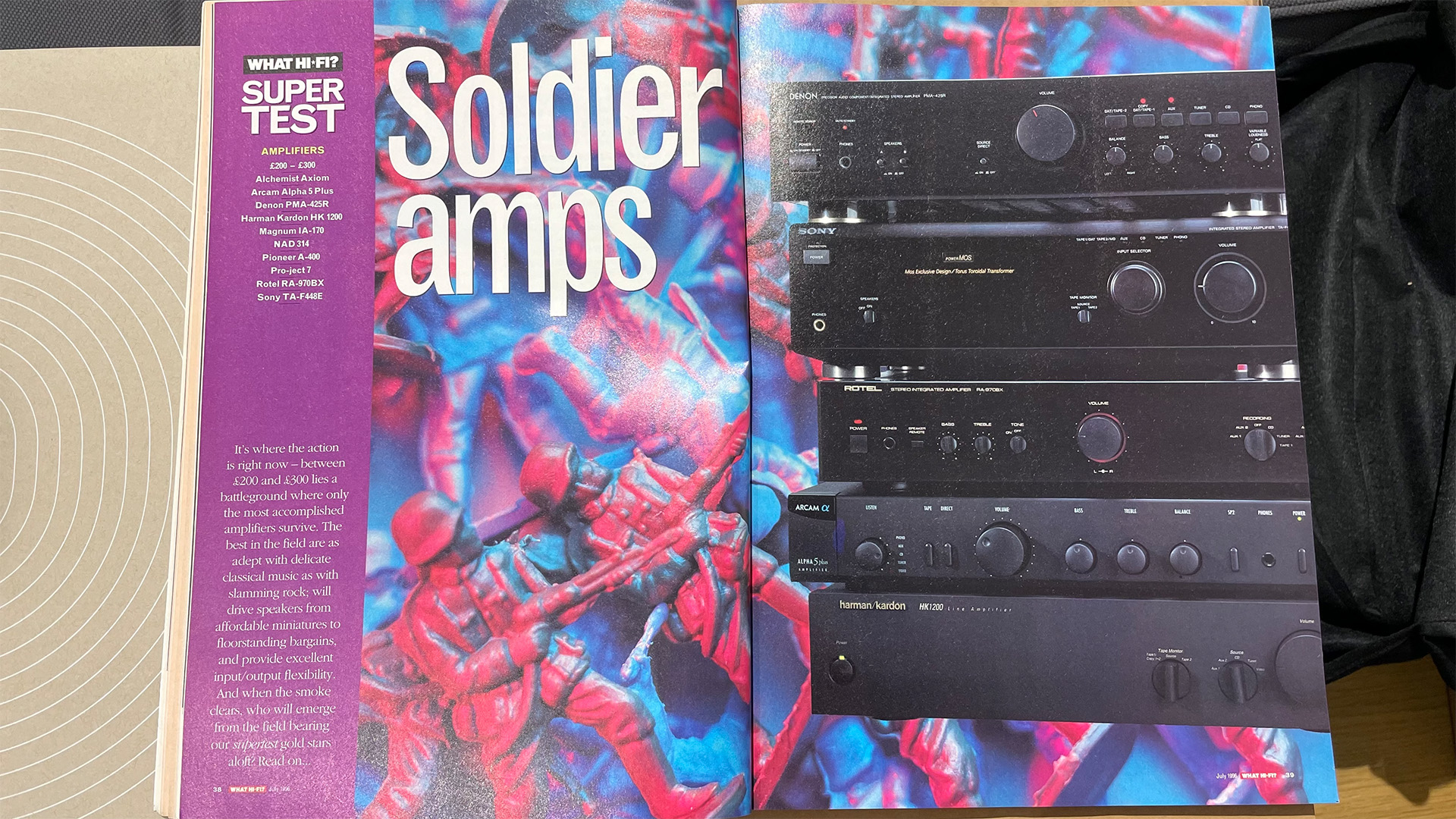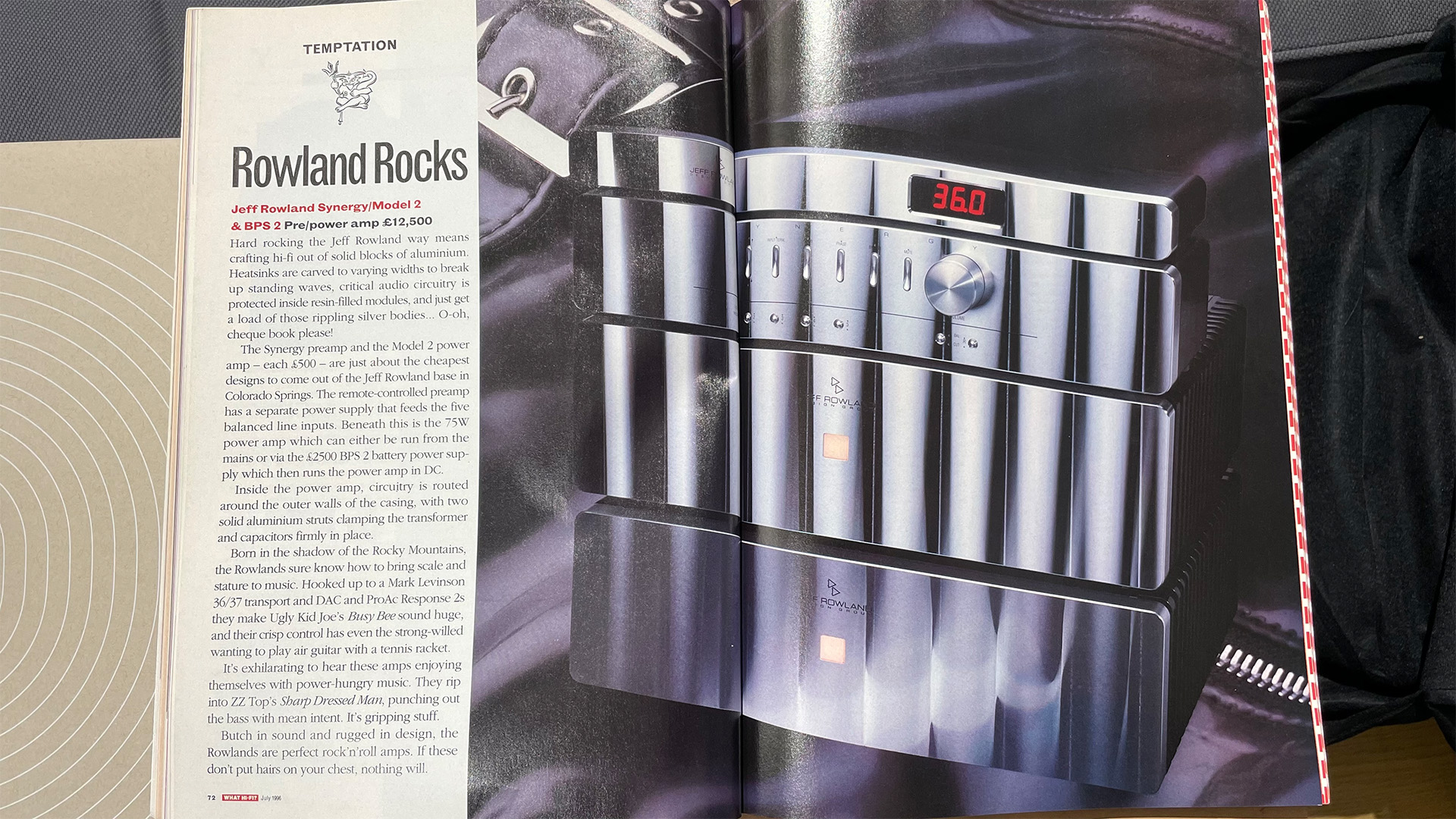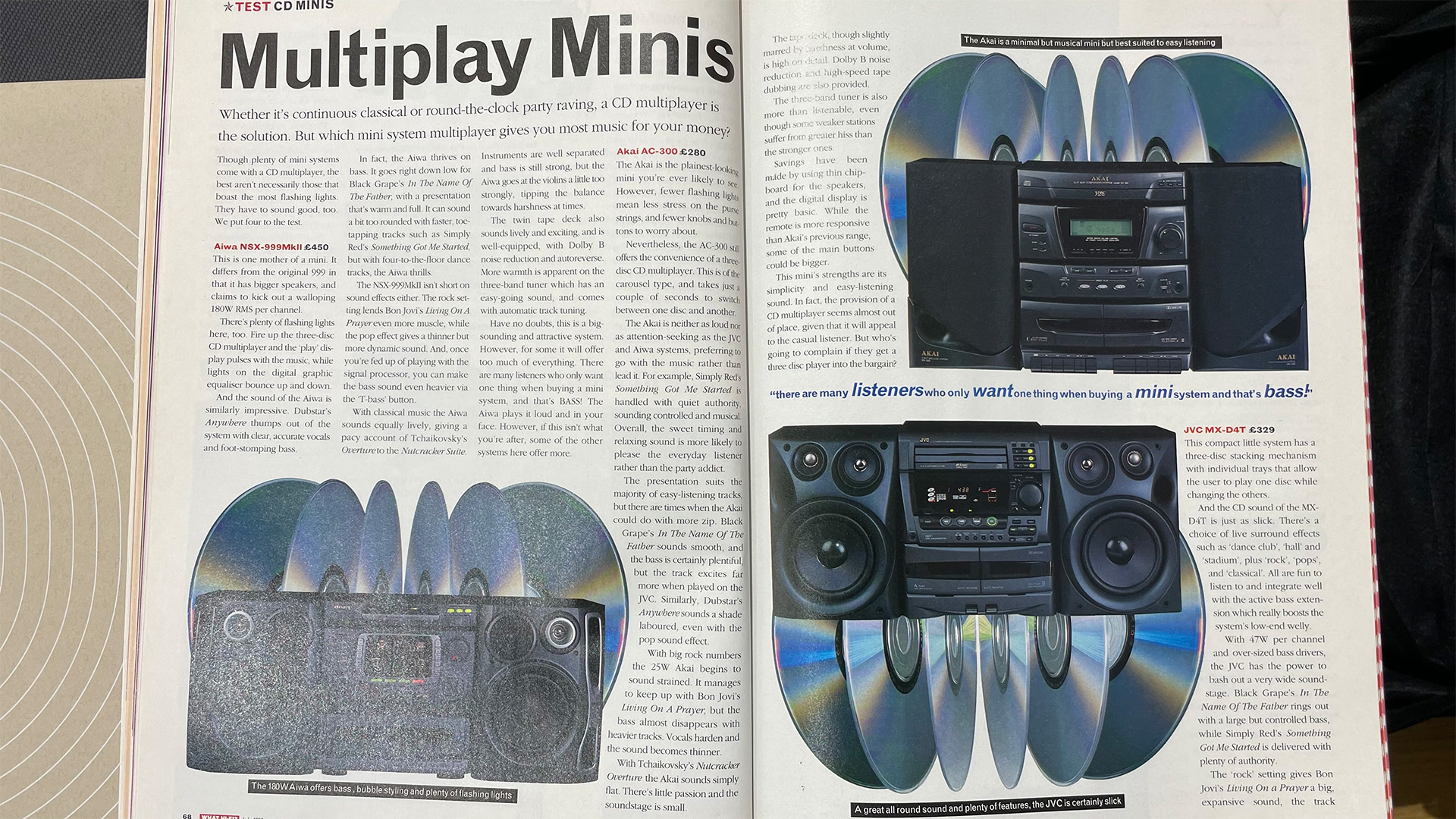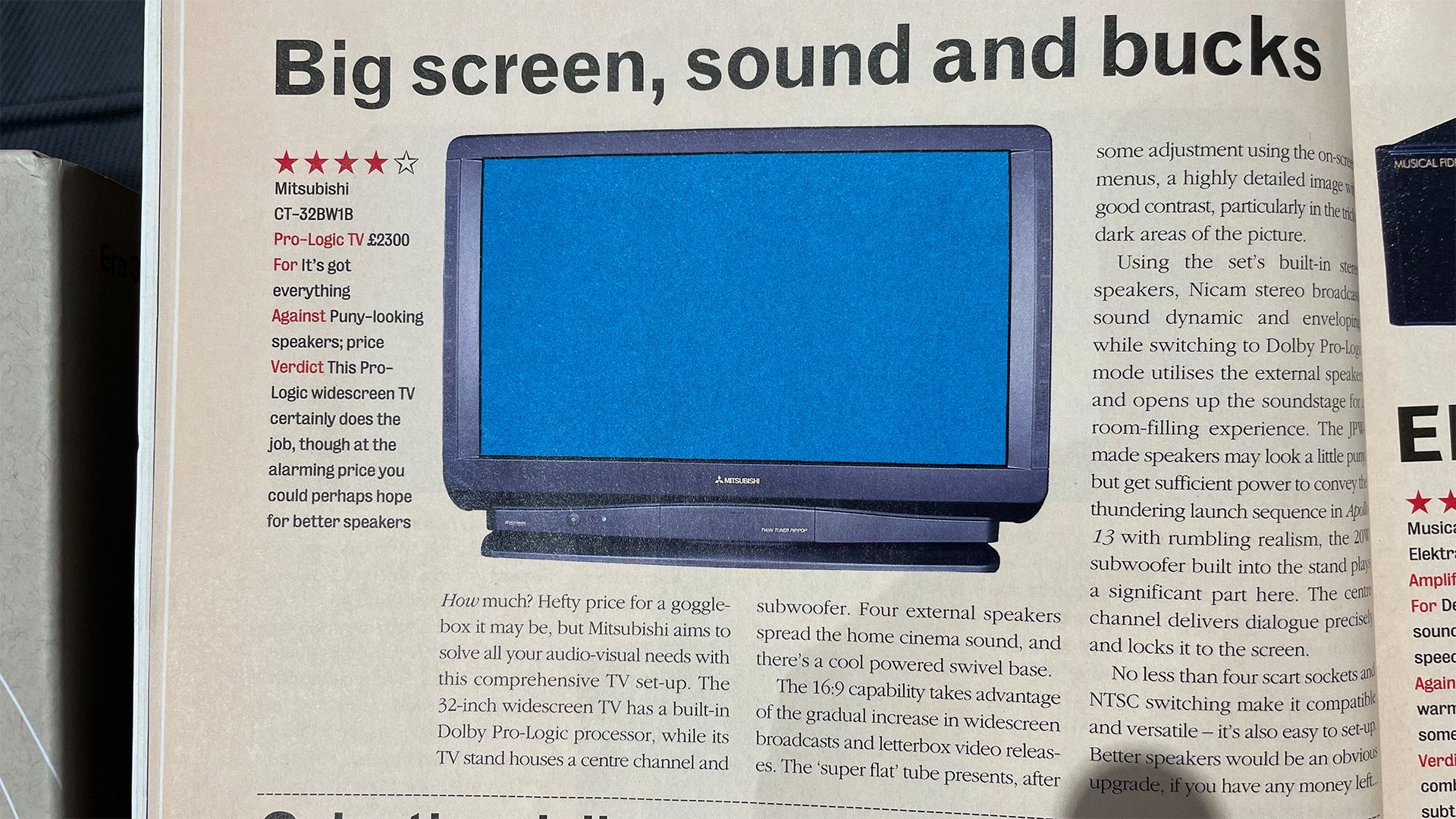A 32-inch CRT TV for £2300? We look back at What Hi-Fi? in 1996
When CD-changers were the Sonos speakers of the day

The July 1996 issue of What Hi-Fi? was an interesting mix.
Our cover from 27 years ago majored on a new Technics CD player, with plenty of other still-familiar brand names to rival it in our sub-£200 round-up. Also highlighted on the front page were a stereo amplifier Supertest, a headphone round-up, and a little hint at the explosion in home cinema technology that was about to launch itself on an enthusiastic public. CD-quality home cinema? Sounds enticing…
Nostalgic – yet reassuring

A glance inside the magazine is, of course, nostalgic; but it is also rather reassuring – in a “the more things change, the more they stay the same…” kind of way.
There are some stark differences, however, emphasising the more than quarter century separating these two magazines. Especially sobering is July 1996’s Supertest: ten stereo amplifiers, all priced between £200 and £300! It’s not so much the price that catches the eye, as the sheer amount of choice at a particular price point. Nowadays, our amplifier round-ups may well have ten products in them, but what was a £100 price spread will now be nearer the £1000 mark. (You could do ten at £10,000, ironically, but that is rather outside What Hi-Fi?’s remit, the odd Temptation apart.)
Temptingly familiar

The core premise of the brand, however, is of course identical – to find you, our reader, the best options to shortlist at a certain budget, by giving straightforward, honest opinions of the equipment out there. Many of the magazine sections are the same, from First Tests, through to Temptations. The pre-power amplifier reviewed as a Temptation in 1996 would look perfectly in place in our June 2023 edition, and could easily sit beside the Goldmund pre-power amp set-up, or Martin Logan Electrostatic speakers that are there now.
The smart speaker of its time?

The test of CD multiplayers brings me back to “the more things change” angle. Twenty seven years ago, consumers got their jukebox-style entertainment from a CD player that could hold a number of compact discs, thus allowing easier access to our favourite music. The Sonos Era smart speakers on What Hi-Fi?’s June issue give that same ability, but with technology that was pretty much science fiction back in the mid ’90s. The principle, however, remains the same – to access your music as conveniently as possible.
Not everything was cheaper

And, although some of the prices might make us yearn to turn back time (if we could find a way…), there certainly seem to be some tests that show we don’t have things so bad in the third decade of the 21st century. Take the Mitsubishi TV above. A big-screen 32in(!) CRT beast, admittedly with some fancy Dolby Pro-Logic sound capabilities, it would have set you back £2300 in 1996. Today, of course, you could double that screen acreage, and add an excellent Dolby Atmos soundbar for less than that kind of money.
Get the What Hi-Fi? Newsletter
The latest hi-fi, home cinema and tech news, reviews, buying advice and deals, direct to your inbox.
And it wouldn't have been a three-man lift to get that massive cathode ray tube set onto a stand.
A hint at an almost unimaginable future

And there is an interesting historical milestone in this July 1996 magazine, referenced in that line on the cover “CD-quality home cinema: it’s the biz”. The Digital Versatile Disc was almost with us.
Long-time What Hi-Fi? stalwart, and then technical editor, Andrew Everard, worried, in the magazine’s leader article, about the specification of the brand new video technology DVD “that will hit the shops next Spring”. While the US and Japanese NTSC market “will have proper Dolby Digital 5.1 sound capability… those made in the PAL format won’t/may not/might have (take your pick, since at the moment your guess is as good as anyone’s).”
We’re pleased to report that Mr E's fears were unfounded – but the arrival of that stunning new technology (for the time) does make you think.
It’s remarkable what a quarter of a century of technological advance can bring. Reading those words shows how far we have come in home cinema in a relatively short space of time. Never mind the advances over DVD that Blu-ray brought to the table; now we have Netflix, Sky Q, Amazon Prime Video, Disney Plus, Dolby Atmos – from a soundbar! – and all the other things we take rather for granted nowadays.
It seems like only yesterday to me; as far as home cinema technology goes, though, it’s verging on mediaeval history.
More next month!
MORE:
New issue of What Hi-Fi? out now: Sonos Era, Spatial Audio, hi-fi separates
Moving magnet or moving coil: which turntable cartridge is right for you?

Jonathan Evans is the editor of What Hi-Fi? magazine, and has been with the title for 18 years or so. He has been a journalist for more than three decades now, working on a variety of technology and motoring titles, including Stuff, Autocar and Jaguar. With his background in sub-editing and magazine production, he likes nothing more than a discussion on the finer points of grammar. And golf.
-
Rodney _trotter I think the late 1990s was the golden era for hifi myself. I remember that issue from 1996 like it was yesterday. A new what hifi magazine coming out was great as the internet was in its infancy then and magazines were still the main source to get hifi reviews from.Reply
Inflation was low, products between £200 and £500 offered the sweet spot for great sound and value. The major manufacturers were all keen to trump each other from all over the world to get 5* reviews pouring in high research and development costs to differentiate designs and technology.
I thinkthe classic products from the late 1990s could well hold their own against those of today for amplifiers and cd players. In fact with inflation now going nuts the 1990s gear will probably have better components and more liberal use of base metals such as copper and aluminium. -
Cricketbat70 I started working for my current employer in 2003 42" plasmas were still £5000 LCD was in its infancy and a 19" was nearly £2000 and the pictures on early LCD's were awful CRT' s were far better.Reply
Now we are selling OLED TV's starting at just over £1000 and 75" 4K LCD's for under £1000.
It does make me wonder about the quality of components going into modern products.
My own TV a Samsung UE49RU8000 died after 14 months, needed a new main board at a cost of £100, thankfully no labour charge as it was repaired at work.
The TV that I had previously a LE40C550 - that was 10 years old at the time of buying the UE49RU8000 - I gave away and is still going strong, now 15 years old.
